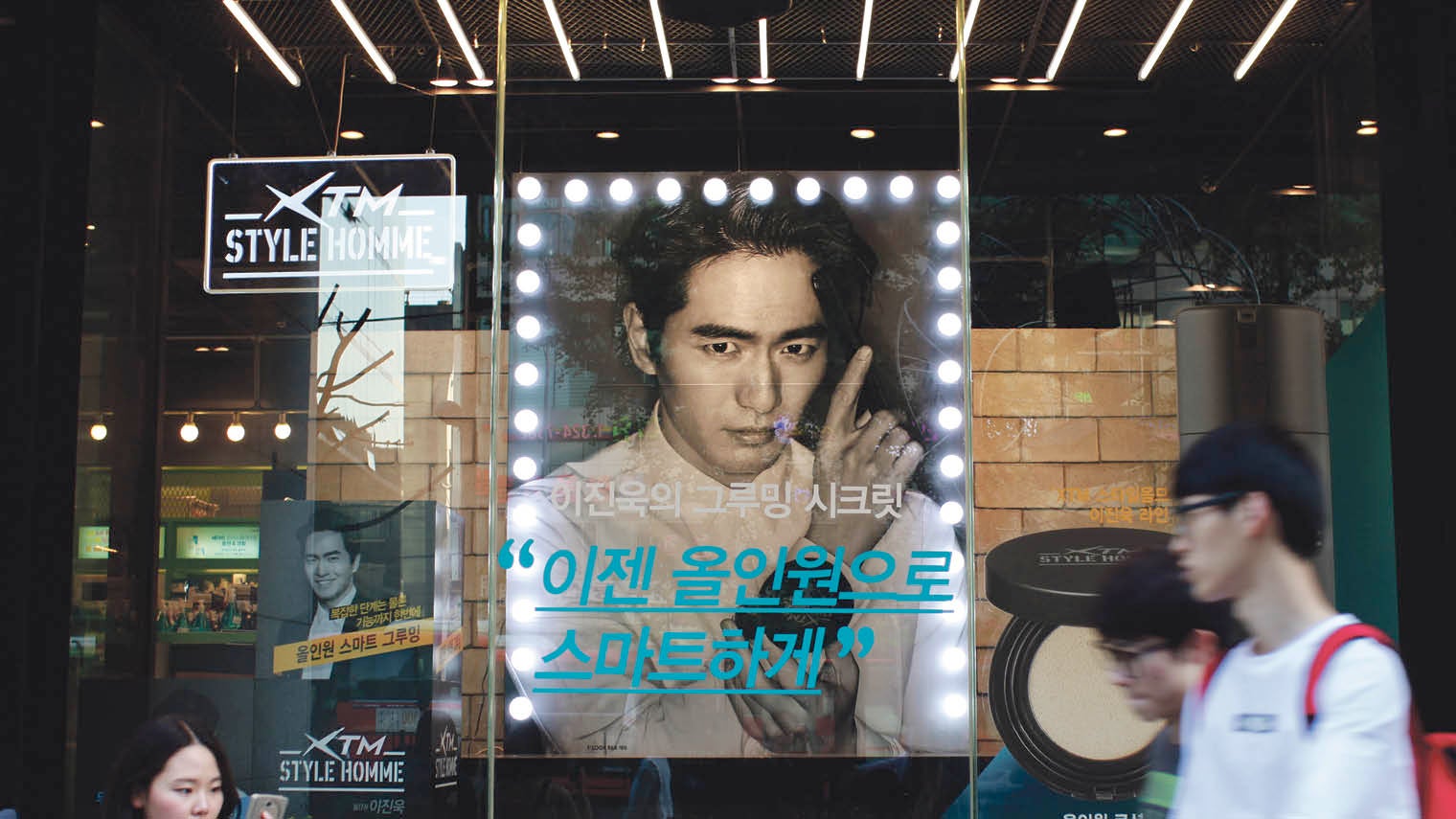South Korea bears all the signs of becoming an indomitable beauty powerhouse. K-beauty, as it’s known, has reached international cult status, inspiring ardour in fans and raising the bar for the sometimes complacent global beauty industry.
“Basically, where Korea leads global beauty companies follow,” says Anna Wang, consultant at Deloitte and founder of UK-based K-beauty online retailer Ulzzang.
Indeed, South Korean innovations have sent tremors through every beauty category. In skincare, sheet masks, ampoules, mists, stick applicators and sleep-packs are contemporary staples that originated in South Korean labs. In make-up, BB creams and cushion compact have achieved legendary status. And electronic gadgets from South Korea replicate the spa experience in consumers’ homes.
K-beauty products stand apart for their high quality, undying commitment to innovation, rigorous safety standards, exotic ingredients – think snail mucus, avocado, plant essences and even placenta – and premium, yet playful, packaging at an affordable price.
Culture and marketplace
Beauty is now one of the country’s largest industries, rivalling technology, and is a major export area. In the past five years alone, exports have grown from $1 billion in 2012 to $2.64 billion in 2017, a record high, according to the Korea Customs Service.
South Korea’s leading brand Amore Pacific has joined the top ten biggest beauty companies at number seven and, despite its demographic decline, the country is now ranked among the top ten global beauty markets, with a market size of $13 billion, according to Mintel.
We have the South Korean people to thank for creating conditions for a market where competition is ferocious. The country’s deep-rooted belief in personal cultivation is twinned with a skin-first, fast-fashion approach to beauty.
“There is a fundamental belief, anchored in a philosophy of wellbeing, pervasive in all of Asia, that you should take care of yourself spiritually and physically as a show of respect to yourself and others, and to your family,” Ms Wang explains.
This cultural milieu, magnified through the social media panopticon of the most highly-connected society in the world where internet speeds are faster than any other, provides perfect tinder-like conditions for new trends to spread like wildfire.
South Korean women are said to spend twice as much on their skin than their American counterparts. “Brands that survive in this tough market are the ones that constantly innovate, constantly looking to new ingredients, textures and formulations – and are the ones that will last and ultimately break through into US and European markets,” says Ms Wang.

The male beauty market in South Korea is booming, with men spending more on skincare than in any other nation
The bigger picture
K-beauty should be unstoppable, but geopolitics and fast overseas expansion have the potential to upend promising companies. The sector is still too heavily reliant on neighbouring China, where historically tense relations entered a deep freeze earlier this year, as China imposed a boycott of South Korean culture and goods following heightened tensions over threatened US intervention in North Korea. This month alone, South Korean beauty brands in China have experienced a 25 per cent drop in growth.
Despite large amounts of government support and funding for 3,000 small and medium sized enterprises, as well as schemes that partner fledgling businesses with university research facilities to accelerate innovation at reasonable costs, most South Korean brands are hamstrung by incomplete business strategies.
“Culturally, Korea is very short-term minded and most brands have a sales-first approach,” says Ju Rhyu, founder of US K-beauty consultancy Inside the Raum.
In the circumstances, brands could pivot their attention to nascent markets in the Middle East, Europe and Latin America or consolidate their business in the United States, where K-beauty is finally tipping into the mainstream.
K-beauty products stand apart for their exotic ingredients – think snail mucus, avocado, plant essences and even placenta
Ms Rhyu, however, fears chains’ product choices veer on the faddish, supplying one-hit-wonder products from companies that have made little effort to grow their brands. Here e-commerce platforms such as Glow Recipe and Soko Glam are seeing an opportunity to incubate South Korean brands in the US market, by supporting their marketing and business strategies, and not merely selling their products.
In the UK, where it has been historically difficult to buy South Korean products other than through bootleggers on eBay and Amazon, Ulzzang is working with brands to navigate European Union regulations which South Korean companies have found opaque and confusing. Ironically, South Korean skincare regulations are among the most stringent in the world, and in natural beauty and animal welfare, the country rivals the most developed markets.
Glow Recipe, the latest K-beauty platform to launch in the US, stocks only South Korean brands that follow a natural philosophy, free from sulphates, parabens, synthetic dyes and fragrances, mineral oils and silicone.
“Whenever we select a brand to curate, we meet with the CEO to see if they are involved in product development,” says Glow Recipe’s co-founder Sarah Lee. “We see a lot of brands that turn out innovations at speed, but the founder is focused on K-pop celebrity endorsements, not their product formulations.”
It is in the global $50-billion male grooming market that South Korea has the most potential to influence international beauty norms, beyond passing trends. South Korean men spend more on skincare than any other nation and wearing light make-up is considered relatively normal.
“The average man’s spend on grooming has gone up from 10 to 40 per cent,” says Dookyo Chung, co-founder of Ulzzang. “Since the Asian financial crisis of the late-nineties, a person’s appearance has become one of the most important factors in the job market and determining status, sometimes even intellectual factors. Demand in men’s skincare started growing then and has skyrocketed since.”
Culture and marketplace

